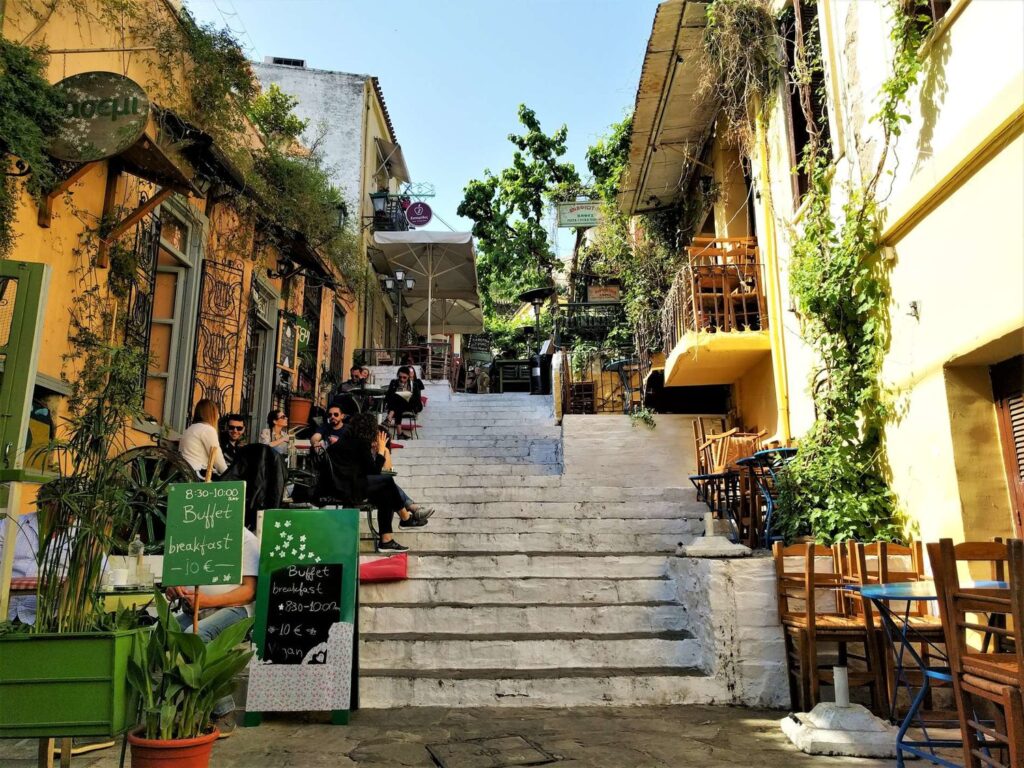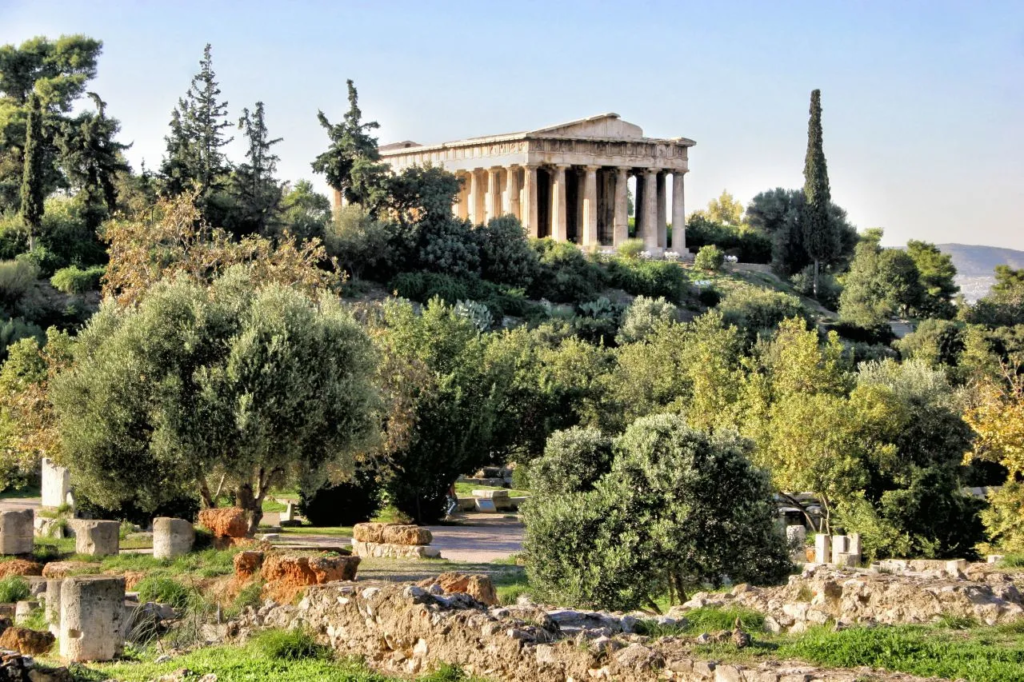Athens, the capital city of Greece, is a captivating blend of ancient history, vibrant culture, and modern allure. With its rich heritage and stunning landscapes, this city offers an array of attractions and activities that cater to all types of travelers. In this comprehensive guide, we will delve into the top Athens attractions, when to visit, how to get there, and the entry prices for each site. Let’s embark on a journey to discover the timeless beauty of Athens.
The Acropolis
The Acropolis, a UNESCO World Heritage site, is the crown jewel of Athens and an iconic symbol of ancient Greece. Perched atop a rocky hill, it houses remarkable ancient structures, including the Parthenon, Erechtheion, and the Temple of Hephaestus. These architectural marvels are not just remnants of the past; they are living testaments to Greece’s extraordinary cultural legacy.

When to Visit: To fully appreciate the Acropolis, visit during the early morning or late afternoon to avoid the crowds and the scorching midday heat. Athens enjoys a Mediterranean climate, so spring (April to June) and early autumn (September to October) are the ideal seasons for your visit.
How to Get There: You can reach the Acropolis by walking from the city center, which allows you to absorb the city’s ambiance as you approach this ancient marvel. Alternatively, you can take a taxi, bus, or the Athens Metro.
Entry Price: Entrance fees to the Acropolis vary depending on the season. The standard ticket was €20 for adults, with reduced prices for students and EU citizens. Please check Viators for cheaper tickets.
The National Archaeological Museum
The National Archaeological Museum of Athens is a treasure trove of ancient artifacts that offers a profound journey through Greece’s history. Its extensive collection includes sculptures, pottery, jewelry, and more, providing insights into the daily lives and achievements of ancient Greeks.

When to Visit: The museum is a year-round attraction, but to avoid crowds, consider visiting during the off-peak months.
How to Get There: The museum is located in the Exarchia district and is easily accessible by public transport.
Entry Price: Ticket prices may vary, so check Viators for current rates.
Plaka District
Nestled at the base of the Acropolis, the Plaka district is a charming neighborhood that oozes character and history. Its narrow streets are lined with neoclassical buildings adorned with vibrant bougainvillea. As you wander through its alleys, you’ll discover quaint shops, traditional Greek tavernas, and cozy cafes. The Plaka district offers a delightful blend of the old and the new, and it’s best explored on foot.

When to Visit: There’s no entry fee to explore Plaka, and you can visit at any time. However, strolling through its streets in the early evening, when the temperatures cool down and the lights come on, is a magical experience.
How to Get There: Plaka is situated below the Acropolis, making it an ideal stop after your Acropolis visit.
Ancient Agora
The Ancient Agora, the heart of ancient Athens, is a historical gem. It includes significant landmarks such as the Stoa of Attalos, the Temple of Hephaestus, and the Agora Museum. This open-air archaeological site invites you to step back in time and imagine life in ancient Greece.

When to Visit: Spring (April to June) and early autumn (September to October) are the best times to visit the Ancient Agora, as the weather is pleasant and the crowds are thinner.
How to Get There: The Agora is within walking distance from the Acropolis and Plaka, making it convenient to explore.
Entry Price: Entry is usually included in the combined ticket for the Acropolis and other archaeological sites. You can check Viators for better price offers.
Mount Lycabettus
For panoramic views of Athens and its surrounding landscape, consider hiking up Mount Lycabettus. At 277 meters (908 feet) above sea level, it offers a breathtaking vantage point, especially during sunset. While the hike is enjoyable, there’s also a funicular railway available if you prefer a more leisurely ascent.

When to Visit: Sunset is a magical time to be atop Mount Lycabettus, but it can get crowded. To enjoy a quieter experience, aim for a visit in the early morning.
How to Get There: You can start your hike from Syntagma Square or take a taxi to the base of the hill. Alternatively, opt for the funicular ride for a small fee.
Temple of Olympian Zeus
The Temple of Olympian Zeus, dedicated to the king of the gods, Zeus, is an imposing ancient temple in the heart of Athens. The temple’s history is as remarkable as its architecture, and it once housed a colossal statue of Zeus.

When to Visit: Visit during the early morning or late afternoon to avoid the heat, as summers in Athens can be scorching.
How to Get There: The temple is within walking distance from the Acropolis and other central areas of Athens.
Entry Price: Entry is usually included in the combined ticket in Viators for the Acropolis and other archaeological sites.
Monastiraki Flea Market
If you’re a shopping enthusiast or just enjoy browsing through unique items, the Monastiraki Flea Market is a must-visit. This bustling market offers a diverse array of goods, from antiques and jewelry to clothing and souvenirs. The market is open year-round, but it truly comes alive on Sundays when additional stalls and street vendors set up shop.

When to Visit: Sundays are the liveliest, but you can explore the market on any day of the week. It’s a great way to immerse yourself in local culture and pick up some unique treasures.
How to Get There: Monastiraki is easily accessible by the Athens Metro and is conveniently located near the Plaka district.
Benaki Museum
The Benaki Museum is a cultural oasis that showcases Greek art and history in a beautifully curated setting. It’s a great place to explore, particularly on a hot summer day when you seek refuge from the sun.

When to Visit: The museum is centrally located and can be enjoyed year-round. Be sure to check their website for special exhibitions and events.
How to Get There: The museum is easily accessible by public transport.
Entry Price: Ticket prices may vary, so check Viators for the most up-to-date rates.
Syntagma Square and the Changing of the Guard
Syntagma Square serves as the central hub of Athens and is home to the Hellenic Parliament. One of the must-see attractions here is the Changing of the Guard ceremony at the Tomb of the Unknown Soldier. This ceremonial event takes place every hour, but the Sunday morning ceremony, accompanied by a full military band, is the grandest and attracts the most spectators.

When to Visit: If you’re interested in witnessing the Changing of the Guard with the full military band, plan your visit for a Sunday morning.
How to Get There: Syntagma Square is well-connected by public transport and is a central point for exploring the city.
Conclusion
Athens is a city that beckons travelers to immerse themselves in its rich history, culture, and natural beauty. By exploring the top attractions and activities Viators provide in its Tour Guides, you’ll embark on a journey through time and experience the essence of this magnificent city. Whether you’re interested in ancient history, modern culture, or breathtaking vistas, Athens has it all waiting for you to discover. Enjoy your adventure in this vibrant and historic city!



